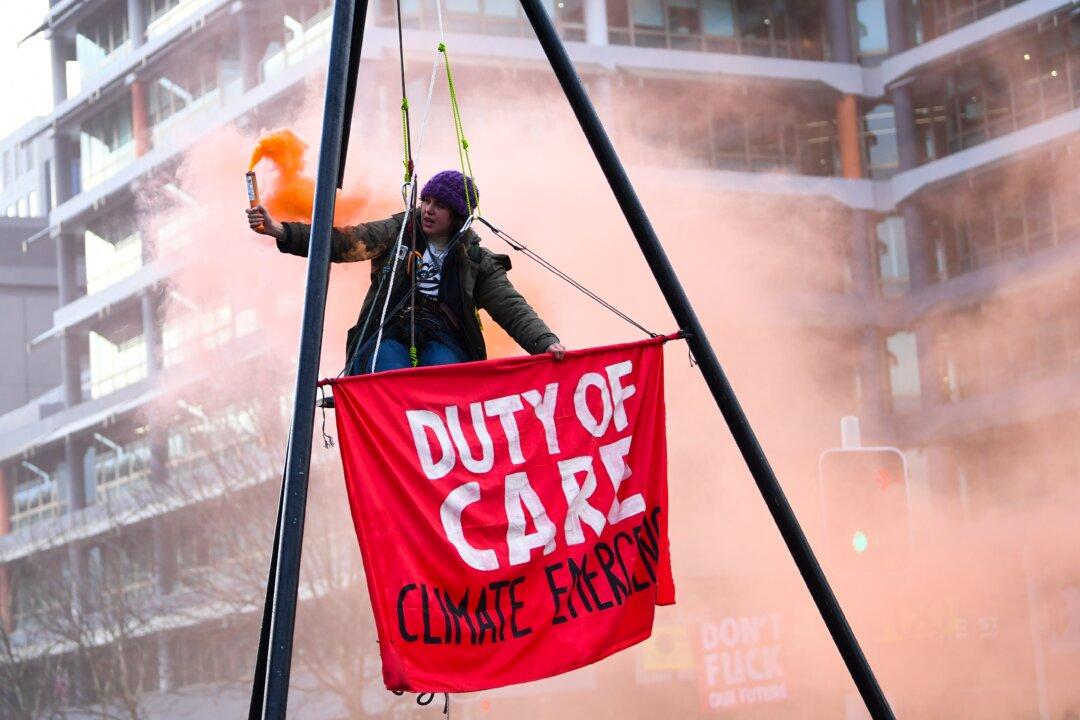Australian Extinction Rebellion (ER) activists blocked four lanes of traffic in the capital city of Canberra and protested in Melbourne on Aug. 3, demanding the Australian government immediately cease what it deems as ‘fossil fuel fervour’ and instead focus on fighting carbon dioxide emissions.
The crowd caused severe disruption to commuters passing by the head office of the nation’s peak oil and gas body—the Australian Petroleum Production and Exploration Association (APPEA).





